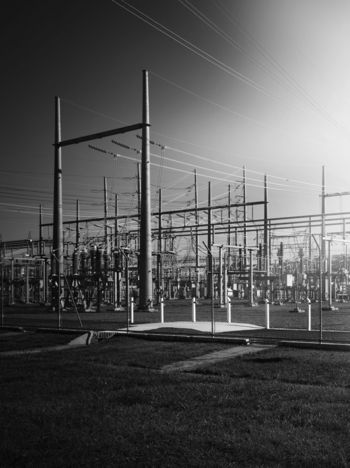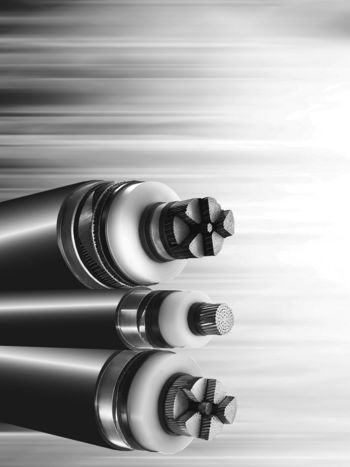Network protection performance audits
Considering the rapid changes to which transmission and distribution networks are subjected, and the ever-shorter expected useful life of numeric protection relays, the requirement for network protection performance audits as part of the lifetime management of protection systems is becoming a necessity. The capability and availability of steady state single frequency phasor-based power system and protection analysis software packages now make it possible to undertake “wide-area” protection performance audits. The scope of the working group was to cover the possibilities, advantages and requirements for utilising proprietary power system and protection analysis software for undertaking protection performance audits of transmission and distribution systems involving hundreds or thousands of protection devices.
Members
Convenor
(UK)
P. WATSON
Secretary
(BE)
F. MIHAELA LAZAR
S. AQUILES-PEREZ (US), F. FERNANDEZ (DE), D. GLENNON (IE), A. GOPALAKRISHNAN (US), C. GUIBOUT (FR), J. JAEGER (FR), P. NEWMAN (UK), R. PATTERSON (US), J. VAQUERO (ES), J. WRIGHT (UK)
Corresponding Members : P. BISHOP (NZ), J.C. MARQUES DE LIMA (BR), M. JALALI (CA), P. KELLER (ZA), A. PODSHIVALIN (RU)
Introduction
This Technical Brochure presents the possibilities, advantages and requirements for utilising proprietary power system and protection analysis software for undertaking protection performance audits of transmission and distribution systems involving hundreds or thousands of protection devices.
As the word “Audit” in the title of this technical brochure suggests, a network’s protection performance is examined based on the performance of the existing protection relays within that network, with their in-service settings applied.
The reasons for undertaking a network protection performance audit could be simply to confirm that for system faults, protection relays with their existing protection settings operate as expected, could be as a result of a major system disturbance, a legal or statutory requirement or because of system and/or protection changes.
System changes include transmission system reconfiguration, the addition or removal of generation, and also changes to or addition of interconnections to neighbouring transmission systems. Following any of these system changes it is prudent to ensure that acceptable performance of both the existing and new protection systems is maintained.
The replacement of obsolete protection relays or protection relays at the end of their useful life could be an opportunity to install protection relays with different protection functions and/or characteristics. An assessment of the performance of these new functions and/or characteristics together with the performance and coordination of existing protection relays working in conjunction with the new functions and/or characteristics will need to be undertaken.
Considering the rapid change to which transmission and distribution networks are subjected, and the ever-shorter expected useful life of numeric protection relays, the requirement for protection performance audits as part of the lifetime management of protection systems is becoming a necessity.
The rigorous calculations involved in setting an individual protection relay and the associated time required to undertake these calculations make a review of all the protection settings associated with a “wide-area” of a transmission or distribution system using this approach impossible.
The capability and availability of steady state single frequency phasor-based power system and protection analysis software packages now make it possible to undertake “wide-area” protection performance audits which could include an entire transmission and or distribution system involving hundreds or thousands of protection devices and a range of system configurations. The protection systems which form the basis of a protection performance audit are the existing non-unit protection relays with their in-service protection settings.
Working Group B5.47 investigated the issues to be considered when undertaking a protection performance audit, power system and protection performance analysis software requirements and methods for assessing protection performance on interconnected wide area networks.
Scope /Methodology
Protection Performance Audits utilise proprietary power system and protection analysis software which facilitates the interactive modelling of the behaviour of protection relays with the steady-state behaviour of the power system under various fault conditions.
Steady state phasor-based models use fundamental frequency voltage and current phasors. The limitation of most phasor-based models is their inability to handle time-related dynamics affecting the fundamental frequency phasors.
Steady state single frequency phasor-based power system and protection analysis software packages however, allow protection performance to be examined for various types of faults (e.g. three-phase, single-phase to earth, phase to phase, etc.), for faults at incremental percentages of the protected circuit, for faults on busbars and for faults with various values of fault resistance. Furthermore, the software can model outages of equipment around the fault locations (contingencies), providing an additional factor in the construction of the fault scenarios.
The network protection performance in response to such a comprehensive range of faults and contingencies can reveal unexpected protection operations and deficiencies of the protection system that would not otherwise have been identified until an actual protection maloperation or non-operation in response to a system fault had occurred.
Transient-based models can consider time-related transients, such as the effects of DC offset, non-linearity of CTs and CVTs, saturation, transformer magnetising inrush current, etc. The consideration of time related transients and dynamics would involve a higher level of investigation than is considered necessary for a network protection performance audit. The complexity of network models, in particular; protection models, would be greatly increased in comparison to the phasor-based analysis. For transient-based models it is more important to focus the target of the investigation (e.g. a single incident investigation) and to restrict the time related phenomena to be considered in order to get reliable results.
Description of the Technical Brochure
This Technical Brochure discusses the expected capability and limitations of steady state power system and relay models used for network protection performance audits. It also gives overall guidance on data requirements and the audit process, including possible automation techniques.
The protection systems most affected by primary system configuration changes or to changes in the connected generation are non-unit type protections (e.g. distance protection, and directional and non-directional overcurrent and earth fault protection). Protection performance audits are therefore focused on the performance of non-unit protection systems. This includes an assessment of the performance of distance protection relays assuming that the communication systems associated with any distance protection schemes (e.g. permissive or blocking schemes) is out of service.
The foundation for undertaking a protection performance audit is the power system model. The topology of the network including all network element parameters must be modelled. Guidance is given with regard to the data requirements of the primary equipment.
Data for protection systems, including relay type, CT/VT details and as installed settings are also required.
The options and considerations for obtaining circuit and equipment parameters and existing in-service protection settings and CT/VT details are discussed.
The application of power system analysis and protection software to protection performance audits requires a systematic approach and the use of automation techniques with regard to the application of faults and the assessment of protection performance.
The Technical Brochure examines the following five main consecutive stages required to undertake a typical a network protection performance audit:
- Stage 1: Data collection and definition of objectives.
- Stage 2: Modelling and Simulation.
- Stage 3: Assessment and Qualification.
- Stage 4: Recommendations and proposal of new settings.
- Stage 5: Confirmation and fine tuning.
A transmission or distribution network will include hundreds or thousands of protection relays. A protection performance audit requires that a variety of faults (single phase to earth, three phase, two phase, etc.) be applied systematically at regular intervals (say 5% or 10%) along each protected circuit and at each busbar. In addition, there is a requirement to assess the response of protection relays to varying values of fault resistance for earth faults.
Each fault is applied as a stepped event. That is, after the application of a fault, the first protection relay to operate trips its associated circuit breaker, the fault is reapplied and the next protection relay to operate trips its associated circuit breaker, the process is repeated until the fault is cleared or no further protection relays operate.
For the analysis of protection operations, each operation should be assessed against defined coordination criteria such as time coordination margins, distance protection reach, critical fault clearing time requirements, etc. The software should have the ability for the protection engineer to define the protection assessment criteria.
Clearly the application of so many faults and the assessment of the response of a multitude of protection relays for each of these faults make the use of automation techniques mandatory.
The power system and protection analysis software used for a protection performance audit should have the facility for writing scripts or macros to facilitate the automation of fault application, analysis and reporting.
In addition, a technique is required to visualise all the protection operations for a particular fault. From the vast number of relay operations that occur when these faults are applied, the visualisation should allow the protection engineer to easily identify which protection relays have not operated as expected and which require further attention.
One such visualisation technique from a commercially available protection performance assessment software package is shown in Figure 1 below. Protection performance in response to a fault is colour coded depending of the level of non-conformance with regard to coordination requirements and operating time.

Figure 1 - Example of visualisation of protection operations against defined criteria
The output of the network protection performance audit should identify existing settings found not to provide acceptable performance and should recommend setting changes and/or CT/VT changes, or the implementation of additional or different protection relays required to improve protection coordination. The recommendations should ensure sensitive, selective and fast fault clearance and so contribute to the enhancement of the power system operational reliability.
Conclusions
A network protection performance audit is one of several tools for assessing the performance of protection relays. Feedback regarding in-service protection operations and post fault analysis including the analysis of digital fault recorder data are complementary approaches to assessing the performance of protection relays and to enhancing the reliability of the power system.
Although the above complementary tools can and are used to check the performance of individual protection relays, a “wide area” network protection performance audit is the only tool which is able to examine the performance of hundreds or thousands of non-unit protection relays installed on an extensive network independent of system operations.
The main advantage of a network protection performance audit is that it identifies latent protection miscoordination issues before they compromise the reliability of the power system operation. An additional benefit is that the power system and protection model developed for an audit can be applied to routinely check protection performance during ongoing network developments.
With regard to the large amount of data required for a network protection performance audit, automation techniques are indispensable, in particular the automation of the input data process with simultaneous plausibility checks, post-processing protection coordination assessment and summary visualisation of the results.
Without automation techniques, extensive resources and time would be required to manually perform a network protection performance audit. Automated audits provide savings in cost, time and human resources and because of the vast number of fault scenarios considered can also identify protection issues that would not normally be identified.





